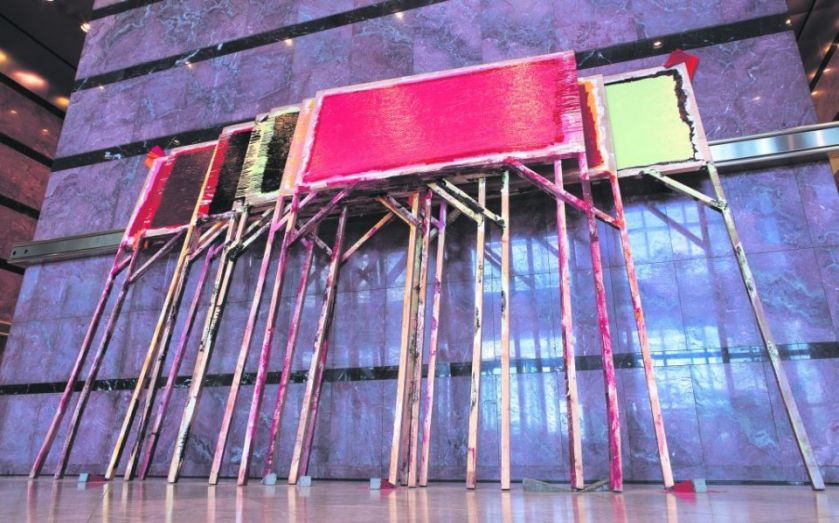Making Canary Wharf feel like home: Commissioning public art for open spaces in a business district

How do you create a sense of community – a sense of homeliness – in a place where no one lives? One way is through art. From the moment Canary Wharf was conceived, architects and planners envisaged a prominent role for culture within the development.
In the 1990s, art historian and former director of the Victoria and Albert Museum Sir Roy Strong was brought in to advise on design-related matters, and since then, artworks both permanent and temporary have helped soften the edges of a district known for glass, steel and hard business.
“A decision was taken very early on that all the materials, objects and functional items would be first class,” says Sally Williams, Canary Wharf Group’s public art consultant. “Artists were brought in to make everything, even things like railings, which were designed to echo the dockside heritage. Attention to detail is so important.”
Williams is responsible for the commissioning, purchasing and loaning of artworks to fill Canary Wharf’s myriad open spaces. Her role requires her to consider design issues large and small: “In Cabot Square there are a number of works that people would immediately recognise as art, such as the couple on seat by Lynn Chadwick. But there’s also the ventilation shafts for the car-parks below, which are artworks by Jeff Bell.”
How does she select art for Canary Wharf? “It’s a question of looking at what the space is, looking at how it is going to be used. Will there be bars and restaurants? You have to ask, what experiences are people going to have there? And how will the art fit in with that experience?”
It’s not just for those who work there. Public art in Canary Wharf also plays an important role in attracting visitors to the area. Events like the Winter Lights festival, in which a handful of international artists display an array of spectacular illuminations throughout the Wharf, have proved a hit with people from all over London, and have helped weekend visitors creep into the hundreds of thousands.
Soon, Canary Wharf won’t have to rely on visitors and workers. In 2018, the first residents will move into apartments on the development. The first ones go on sale later this year. How will the people moving in affect the kind of art that gets commissioned? “We already engage with local people who don’t live on the estate. It will just mean more communication, and perhaps more interactive artworks. We need to build a community. It is already more than a business district.”
So which is her personal favourite artwork?
“It’s hard to choose but one of them is called Coup de Foudre by New Zealand artist Bill Culbert. It’s a neon piece. The site of the commission was an aerial space and it works well from the perspective of people in the skyscrapers above.”
GREATEST HITS: PUBLIC ART IN CANARY WHARF

Nigel Ross
2003

Danny Lane
2003

Keith Rand
1999

Michael Lyons
1994

Bill Culbert
2009